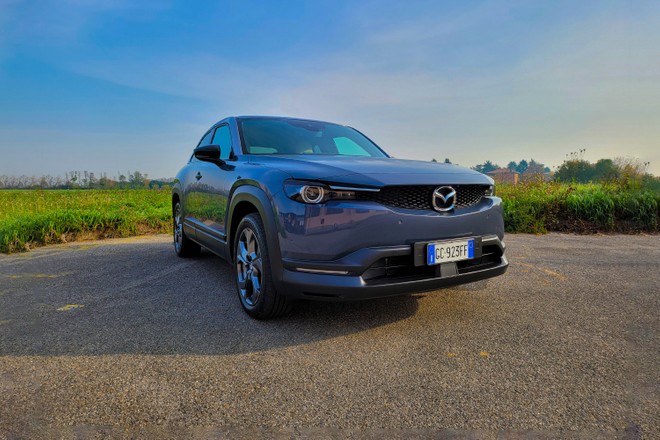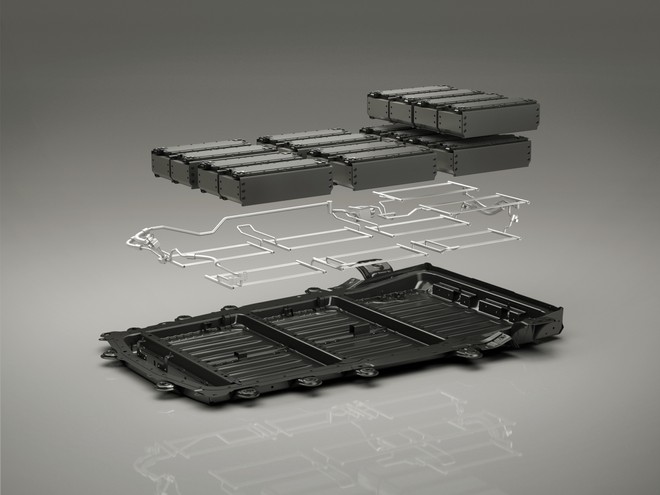
Mazda MX-30 faces the test of real consumption a short distance from the announcement of the MY2022 version and after it is; the name of the model with Range Extender, MX-30 REV has been revealed (revealed during the test of the CX-60). Why & eacute; all this is; important? Simple, because & eacute; the demonstration of the efficiency of the small town electricity is; already a first confirmation for the version that will have to; debut, the REV.
If, today, Mazda MX-30 has to settle for a limited autonomy that makes it suitable only for the city & agrave; and extra-urban, tomorrow the version with the thermal engine that will do & agrave; from generator to recharge the batteries, it will be able to position itself among the most hybrids; efficient. Traction remains electric, emissions will be very low and autonomy should not be a problem, as long as you correctly size everything with a not too small tank
- TEST REAL CONSUMPTION
- RECHARGE TIMES AND COSTS
- PRICES AND INCENTIVES 2022

 Mazda MX-30, what's new? of the Model Year 2022. Prices from 36,550 euros 14
Mazda MX-30, what's new? of the Model Year 2022. Prices from 36,550 euros 14
Auto 05 May

 Mazda MX-30: review, consumption and recharge test (AC, DC and IONITY) 92
Mazda MX-30: review, consumption and recharge test (AC, DC and IONITY) 92
Auto 04 Gen
As usual the test is; was performed in real traffic conditions in the circuit amicably nicknamed BrianzaRing. Here you will find the route and the rules of the test. City, ring road and motorway, ups and downs to also check performance in terms of recovery. This is a possible scenario, suitable for many, but not for all because & eacute; those who only make the motorway, for example, will see & agrave; significantly higher consumption.
The system, however, allows you to compare different electric cars in terms of efficiency. Mazda MX-30, with a 35.5 kWh battery, averaged 13.8 kWh/100 km on the test track . The speed of all the three passages, which are then precisely mediated, & egrave; was in line with the other cars, numerical confirmation that the real traffic was comparable with the situation of the other tests.
REAL CONSUMPTION AND AUTONOMY 
p89ce.jpgIn the review, the Mazda MX-30 had faced the winter and the test in a warm May confirmed the difference in autonomy in the different conditions. If in winter, at less than 10 & deg ;, the motorway consumption was as much as 27.4 kWh/100 km at a speed; of 120 per hour, in the summer the conditions changed to the point that the car registered 24 kWh/100 km at a speed; higher (130 per hour).
Regardless of the temperatures, the MX-30 suffers from the highway and is not; certainly the car to take for long journeys because the battery & egrave; sized for longer routes; short and frequent evening recharges: in this scenario & egrave; perfect because & eacute; consumes little and topping up easily every evening by connecting it in the garage or to a column.
 The battery air conditioning system
The battery air conditioning system
Also note the difference in charging: MX-30, in general, does not excel in charging in DC but the summer fast charging curve reached peaks of 39 kW unlike 35 kW during the winter test.
- Total test consumption : 18.6 kWh/100 km in winter, 15.7 kWh/100 km in summer
- Average consumption BrianzaRing : 13.8 kWh /100 km in summer
Total test consumption means the average consumption recorded during the tests using it in everyday life (city, motorway, extra-urban), while the average consumption at BrianzaRing is; that of comparison with fixed percentages of motorways, climbs, descents and city roads and ring roads.
CHARGING TIMES AND COSTS 
 here's a mirror as usual on autonomy data and charging costs calculated taking into account the real consumption in our test circuit, all rounded up on time and costs:
here's a mirror as usual on autonomy data and charging costs calculated taking into account the real consumption in our test circuit, all rounded up on time and costs:
- Real autonomy MX-30 (2021) 35.5 kWh (145 hp): 257 km
- Autonomy on the highway MX-30 (summer): 147 km
- Average autonomy summer test (combined): 226 km
- Average winter test range (combined): 190 km
- How much does a recharge cost MX-30: free (FV + BATT) , or between 6 and 13 & euro;
- How much 100 km cost with MX-30? free , or between 2,3 and 5,1 & euro;
- Charging from home (2.3 kW – 10A): 16 hours
- Charging from home (3.7 kW – 16A): 9.6 hours
- Charging AC column (7.4 kW, 32A): 4.8 hours
- AC charging column (11 kW, 16A): 9 , 6 hours (3 hours for MY2022)
- DC charging (350 kW max): 40 minutes (10-80 %)
The comparison : how much 100 km cost today with a 150 HP CX-30 petrol E-Skyactiv G micro hybrid? 10.6 & euro; to the WLTP declared consumption of 5.9 l/100 km (not the real one). Data referred to the date of publication of the test.

 The difference between kW and kWh and why? ? important | Electric car driving 163
The difference between kW and kWh and why? ? important | Electric car driving 163
Auto 28 Mar

Electric car charging time: at home and at AC/DC columns | Video 249
Auto 11 Apr
IMPORTANT NOTE : the table (here) uses a fixed energy price like this to be able to compare electric cars. The bulleted list (here), on the other hand, uses the price updated at the date of writing this test, using the best electricity rate available on the free market and the price of gasoline indicated by the MISE (link below).
How much does a Mazda MX-30 recharge cost you? To calculate how much you spend you have to recover the price of your tariff (found in the electricity bill) which is; indicated as & quot; euro per kWh & quot ;. This figure must be multiplied by the 35.5 kWh of capacity; of the MX-30 battery, net of the losses that we neglect. How much does 100 km cost you with the Mazda MX-30 calculated according to the price of your fare? Multiply the consumption of the test (13.8) by the average price of the kWh in the bill.
- Average price of electricity in Italy (ARERA, Maggio Tutela, domestic consumer)
- Induces PUN (Single National Price)
- Price medium fuel Italy (MISE)
PRICE AND INCENTIVES 
. </p>
<p> <strong> Mazda MX-30 Prime-Line, with the maximum incentive </strong>, therefore costs <strong> 27.150 & euro; </strong> also applying official discounts and promotions of the Mazda network in Italy. </p>
<h3 style = ) MAZDA MX-30 ONLINE CONFIGURATOR
MAZDA MX-30 ONLINE CONFIGURATOR
The best Xiaomi for photos without 5G? Redmi Note 10 Pro, buy it at the best price from Amazon Marketplace at 399 euros .